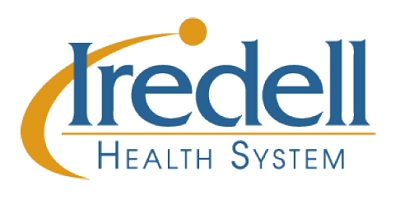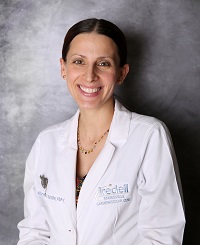
Special to Iredell Free News
Have you been told you have high blood pressure? If so, it may have come as a surprise, considering you probably had no apparent signs or symptoms. You may have thought, “I feel fine. There’s nothing to worry about.”
While you may feel fine, high blood pressure works quietly, damaging your body’s normal function over time and putting you at risk for life-threatening complications.
Many times, symptoms and signs make a disease feel more real. We know we have it because we can feel it. But unlike many other illnesses, high blood pressure rarely comes with warning signs or symptoms.

“Hypertension (high blood pressure) is called ‘silent killer’ due to causing serious health conditions such as stroke, heart attack, heart and kidney failure, development of arrhythmias (abnormal heartbeat), and eye problems, among other conditions,” said Maryna Yacinthe, a nurse practitioner (NP) at Statesville Cardiovascular Clinic.
High blood pressure is incredibly common in the United States — nearly half of American adults have it.
Yet many are unaware and are not receiving treatment for it. However, left untreated, high blood pressure can lead to serious health problems. In fact, according to the Centers for Disease Control and Prevention, high blood pressure contributed to or caused more than 670,000 deaths in the United States in 2020.
By educating yourself and taking charge of your high blood pressure, you can catch this silent killer before it’s too late.
What is high blood pressure?
Blood pressure is the force of blood against the walls of your arteries. High blood pressure means your blood is continuously pushing harder against blood vessel walls instead of smoothly flowing through.
Since high blood pressure is largely symptomless, you should make it a habit to get your blood pressure checked regularly.
“Hypertension is diagnosed by a healthcare provider based on two or more blood pressure readings on separate occasions,” said Yacinthe.
Blood pressure is measured in two numbers: systolic, which is listed first (the top number), and diastolic, which is listed second (the bottom number). Blood pressure is considered normal when it is below 120/80 mmHg. People with blood pressure readings of 120-129 systolic and less than 80 diastolic are in a category known as elevated blood pressure.
At this stage, it’s important to consult your healthcare provider about making lifestyle changes to lower your blood pressure before it develops into high blood pressure, or hypertension. High blood pressure is defined as a systolic pressure of 130 or higher, or a diastolic pressure of 80 or higher.
High blood pressure makes your heart and arteries work harder, which increases your risk for:
• Clogging of the arteries throughout your body
• Heart attack
• Heart failure
• Stroke
• Kidney disease
• Vision loss
“There is no cure for hypertension. However, lifestyle changes and medications can help lower and keep blood pressure at desired levels,” said Yacinthe.
Taking Charge of Your High Blood Pressure
If you do have high blood pressure, it’s essential to listen to your healthcare provider’s recommendations and take the necessary steps to protect your health. Below, Yacinthe lists a few lifestyle changes that may help lower your levels.
1. Manage your weight: Blood pressure often increases as your weight increases. Carrying too much weight, in your waist specifically, can increase your risk of high blood pressure.
“Extra weight may also cause sleep apnea, which worsens hypertension. You should get tested for sleep apnea. If snoring is present, including witnessed episodes of apnea (stopping breathing during sleep), you may have sleep apnea,” said Yacinthe.
You should speak to your healthcare provider about a healthy weight and waist measurement for you.
2. Limit salt intake: Too much salt, or sodium, in your diet can boost your blood pressure.
“You should reduce your sodium intake to 2000mg or less a day. Read food labels, consume less processed and fast food, try to cook more meals at home, and do not use the salt shaker,” said Yacinthe.
“Kosher or sea salt is no better or healthier than regular salt. They all have the same sodium content and count the same toward sodium consumption,” she added.
Your healthcare provider may advise following the DASH (Dietary Approaches to Stop Hypertension) eating plan. This plan is designed to help you manage your blood pressure by emphasizing healthy food sources and limiting red meat, sodium, and sweets.
3. Reduce alcohol intake: Reducing alcohol consumption can lower your blood pressure. According to the American Heart Association (AHA), if you drink, you should limit your alcohol consumption to no more than two drinks per day for men and no more than one drink per day for women.
4. Quit smoking: Nicotine, found in tobacco products and vaping products, can raise your blood pressure. If you need help quitting smoking, make sure to talk to your healthcare provider.
5. Get regular exercise: According to the AHA, increasing your physical activity can lower systolic and diastolic blood pressure by an average of 3-4 mmHG.
“Try to exercise 30 minutes a day, at least five days a week,” said Yacinthe.
6. Monitor your blood pressure at home: Yacinthe frequently hears patients say, “Since my blood pressure is checked at my doctor’s office, I do not need to check it at home.”
However, Yacinthe encourages patients to keep track of their blood pressure at home since it can fluctuate.
The AHA recommends choosing an automatic, cuff-style, bicep home monitor. You should choose a home monitor that has been validated. If you are unsure, ask your doctor or pharmacist for advice, or find options at validatebp.org.
LEARN MORE
Make sure to speak with your healthcare provider for specific, personalized advice on how to lower your blood pressure.
Yacinthe practices at Statesville Cardiovascular Clinic, located at 738 Bryant Street in Statesville. If you would like to learn more or schedule an appointment with Maryna Yacinthe, NP, please call the office at 704-873-1189.
About Iredell Health System
Iredell Health System includes Iredell Memorial Hospital; Iredell Mooresville; Iredell Home Health; Iredell Wound Care & Hyperbaric Center; Community and Corporate Wellness; Occupational Medicine; the Iredell Physician Network and more. Iredell Memorial Hospital is the largest and only nonprofit hospital in Iredell County. The comprehensive healthcare facility has 247 beds; more than 1,800 employees; and has approximately 365 healthcare providers representing various specialties. Centers of excellence include Women’s and Children’s; Cardiovascular; Cancer; Surgical Services and Wellness & Prevention. The Health System’s newest campus, Iredell Mooresville, is home to the area’s only 24-hour urgent care facility, as well as an ambulatory surgery center, imaging center, rehabilitation services, and physician practices. The mission of Iredell Health System is to inspire wellbeing. For a comprehensive list of services and programs, visit www.iredellhealth.org



